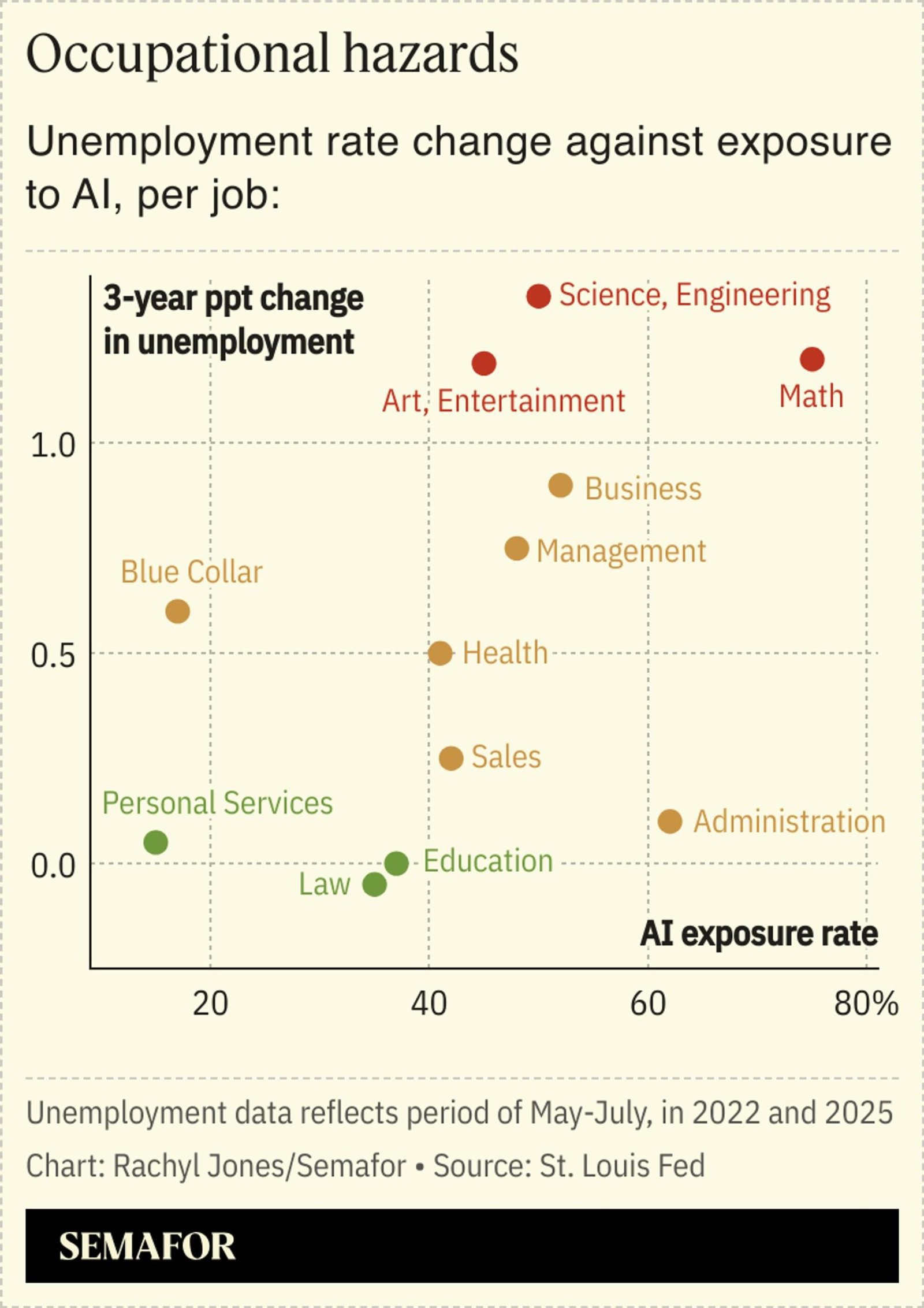Tools & Platforms
Op-Ed: 3D printing, AI and MIT turn food waste into useful things

Drata analyzed global poll data from the Massachusetts Institute of Technology to illustrate corporate America’s preparedness to implement AI.
– Photo illustration by Stacker // Shutterstock
The mix of AI and 3D printing was inevitable. Add MIT and some very practical ideas, and you get the likely basis of future resource management. This is sustainability with legs. It’s called FoodRes.Ai Printer, and it’s a game-changer in so many ways.
It looks straightforward enough in theory, but the basic idea is the goldmine.
Consider this:
You need to accurately assess the value of waste materials as resources for 3D printing. If you know the somewhat torturous history of creating materials suitable for printing, this is a huge breakthrough.
You need the capability to convert waste materials like food scraps into printable materials. Not easy, and these materials can be highly variable in content. Food waste, it should be understood, isn’t a particularly cooperative range of materials. These materials can be in any condition.
You have to create printing options for multiple objects. This Popular Science article defines the current state of play for FoodRes.
It must be easy to use in a single, simple process for consumers and onsite production. FoodRes couldn’t get any simpler, as you can see from this YouTube video.
The AI component is the critical dynamic here. This is real AI, the high-value scientific information processing variety, not the chatty, too-much overhyped variety, and it’s extremely efficient. FoodRes includes a mobile app that identifies and creates “recipes,” as designer Biru Cao calls them, for 3D printing options.
The 3D printer looks pretty simple and durable. All it requires is the raw materials and some natural additives. You just upload a photo of the materials to the AI, and it creates the printing options.
The 3D prints are also customizable to a large extent. At the moment, the scale of production is naturally based on the printer’s capacity, but you have to start somewhere. It’s not hard to visualize a whole custom dinner set being made.
The future
The new horizon created by FoodRes is vast. Imagine a simple process for converting any kind of waste or basic materials into almost anything. The sheer efficiency of this thing deserves respect. It’s a very practical way of managing any kind of waste or indeed any kind of available materials.
The evolution of FoodRes will be well worth watching. 3D printing has just gained a major asset in terms of materials management. Materials science has just gained a lot of new space for the development of new materials. Waste management has just had its load revised downward. if this tech develops high capacity, like simply generating printing materials for commercial use.
If there was ever a practical idea, this is it.
_________________________________________________________
Disclaimer
The opinions expressed in this Op-Ed are those of the author. They do not purport to reflect the opinions or views of the Digital Journal or its members.
Tools & Platforms
Attachment to AI relationships: navigating complex feelings towards technology – News Channel 3-12
Tools & Platforms
AI can’t work without humans, for now, report finds

The emerging picture, for now, is that humans are still needed to work in conjunction with AI.
Despite warnings from AI leaders that the technology will wipe out entire classes of workers in the coming years, a report by the New York Federal Reserve found that manufacturing and service industries in the region are mostly safe from new technologies taking jobs in the near term. Managers are increasingly opting to retrain their employees rather than axing them.
As part of their warnings, AI leaders have also indicated that entirely new jobs will surface with the AI boom. It’s too early to say what all those roles will be, but some artists have gotten an early taste of their job description in a post-AI world. Graphic designers are being hired by businesses to fix sloppy AI-generated photos — often images with gibberish language and messy lines that don’t scale well, NBC reported.
While creatives have historically devised and illustrated their ideas, using tech tools like Photoshop to fine-tune them, the script appears to have flipped — with AI starting the process and humans perfecting the final product. It’s likely to be the recipe for many jobs moving forward, from software development to journalism.
Tools & Platforms
Will AI replace lawyers? What Canadian legal professionals should know

To remain compliant, lawyers should review court guidance and consult their jurisdiction’s Code of Conduct. For example, the law society of Alberta published a “Gen AI Rules of Engagement for Canadian Lawyers” to guide practitioners. As tech evolves, the burden is on lawyers to ensure their AI-use meets conduct standards.
Will AI replace lawyers practicing in specific areas? That doesn’t seem to be the case today and in the foreseeable future. Instead of replacing lawyers, AI is more likely to become a tool that enhances the work of legal practitioners. Used properly, AI lets lawyers focus on high-value activities like strategic planning, client counselling, and courtroom representation.
Ultimately, the question is not whether AI will replace lawyers. Instead, it will be how lawyers can use AI to better serve clients. Here are some tips for leveraging AI for lawyers:
Invest in continuous learning
Stay updated on developments in legal technology, AI tools, and changes in Canadian law. Regularly attending seminars, webinars, and legal tech conferences can help keep pace with industry trends. This means signing up for events and seminars like the Canadian Legal Summit to stay up to date with what’s happening in legal tech.
Embrace technology
Rather than viewing AI as a threat, treat it as an opportunity to enhance your practice. Experiment with reputable legal AI tools for research, document review, or contract analysis before integrating them into your workflow.
-

 Business1 week ago
Business1 week agoThe Guardian view on Trump and the Fed: independence is no substitute for accountability | Editorial
-
Tools & Platforms3 weeks ago
Building Trust in Military AI Starts with Opening the Black Box – War on the Rocks
-

 Ethics & Policy1 month ago
Ethics & Policy1 month agoSDAIA Supports Saudi Arabia’s Leadership in Shaping Global AI Ethics, Policy, and Research – وكالة الأنباء السعودية
-

 Events & Conferences4 months ago
Events & Conferences4 months agoJourney to 1000 models: Scaling Instagram’s recommendation system
-

 Jobs & Careers2 months ago
Jobs & Careers2 months agoMumbai-based Perplexity Alternative Has 60k+ Users Without Funding
-

 Education2 months ago
Education2 months agoVEX Robotics launches AI-powered classroom robotics system
-

 Funding & Business2 months ago
Funding & Business2 months agoKayak and Expedia race to build AI travel agents that turn social posts into itineraries
-

 Podcasts & Talks2 months ago
Podcasts & Talks2 months agoHappy 4th of July! 🎆 Made with Veo 3 in Gemini
-

 Podcasts & Talks2 months ago
Podcasts & Talks2 months agoOpenAI 🤝 @teamganassi
-

 Education2 months ago
Education2 months agoMacron says UK and France have duty to tackle illegal migration ‘with humanity, solidarity and firmness’ – UK politics live | Politics














